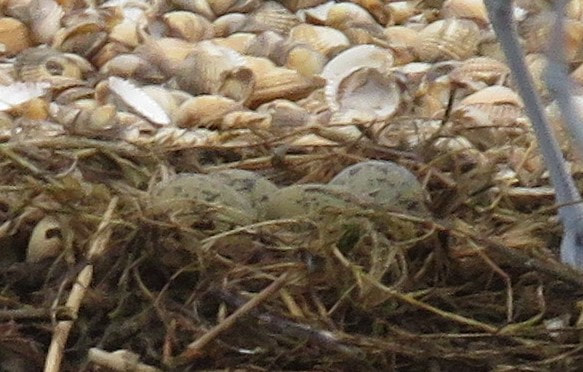 Avocet incubating eggs
Avocet incubating eggs Open the windows of the Allen Hide and the raucous screeching of black-headed gulls hits in a wave of sound.
The closest avocet pair is constantly tending the nest, tidying fragments of vegetation with long, upturned bills. I reckon they're turning their eggs before fluffing up their plumage to sit and incubate. When they both stand I glimpse four mottled eggs in the nest and the waders place their long silver-blue legs and webbed feet with care.
An electric fence protects the site from foxes. But that nest looks dangerously close to the water's edge, if water-levels should rise.
Feather-care is essential and both black -headed gull and avocet are constantly preening. The uropygial gland (or oil gland) is at the dorsal base of the tail. Rain drops appear on the water as the avocet reach their supple necks to run their bills to and fro. to smear them with water-proofing oil. Preening is constant and intricate as the birds open their wings to reach the preen gland then delve their bills deep into their plumage, to spread the oil which is both water-proofing and anti-bacterial, and to sleek their feathers with much shaking and ruffling. We are within the shelter of the hide but the skies are darkening and a heavy shower is coming.













 RSS Feed
RSS Feed